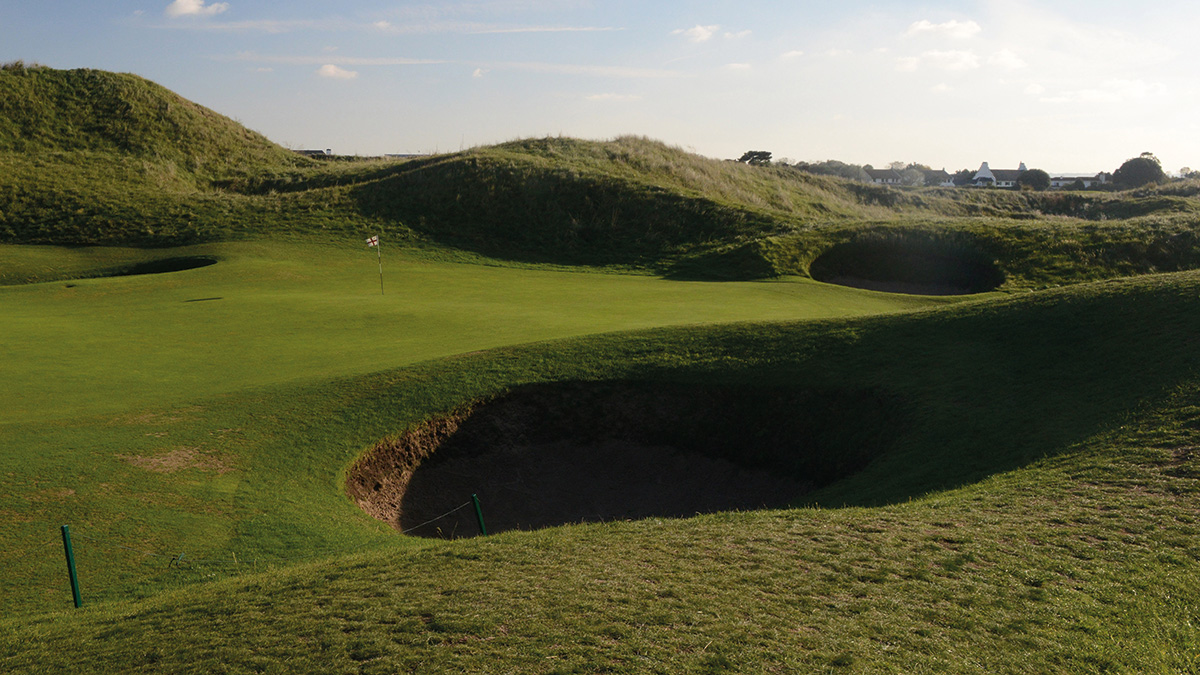- Homepage
- News and Features
- How does this Open venue build its bunkers?
How does this Open venue build its bunkers?
This article was featured in the Spring 2019 edition of Your Course magazine
There’s a misconception that maintaining sand traps takes a few short minutes but, as Royal St George’s head greenkeeper Paul Larsen says, there is a craft to constructing a bunker.

Ask a golfer about their bunkers and you’ll hear a range of responses – none of them usually complimentary. The hazards can make the mild-mannered turn puce, whether that’s carping over a ball that’s stuck in the face, moaning about the raking or complaining about their consistency.
The average player reckons keeping a course’s bunkers in good condition is an easy task. I mean, how difficult can it be to rake a bunker?
The answer is more complicated and in fact, nothing about the way bunkers are maintained, built or redesigned is simple.
There are 104 bunkers at Royal St George’s and the eyes of the golfing world will be on all of them in July 2020. The Open returns to the Kent course after a nine-year absence and head greenkeeper Paul Larsen and his team have been working feverishly to ensure the famed layout is in its best condition for the arrival of the world’s greatest golfers.
Key to Paul’s work, and that of his team, is the preparation and maintenance of the bunkers that form such an important part of the challenge of playing a links course.
The most famous of those is gargantuan Himalaya, a crevice that is 40-feet deep and 25-feet wide and sits on the fourth hole.
But, with a team of 15 staff, keeping all of the Sandwich layout’s bunkers at their best is a job that takes precision and hours of work.

“They are maintained and prepped all year round,” said Paul. “There is not a time they are not worked on. If we rake them every day, that’s two guys taking three or four hours each to do them. I try to do them with quite a few of us.
“What we’ll tend to do is hand cut the greens and rake the bunkers at the same time. In four hours in the morning, we will get the bunkers raked and the greens cut. Separately, another two people will spend six hours raking fairway bunkers.”
Only half a dozen of the bunkers at Royal St George’s are natural, with the majority revetted, whereby sods of turf are stacked on top of each other to produce a layered effect in the face.
It’s a lengthy process and, as Paul attests, an art form. It’s also a project that needs repeating every four years as the faces wear and require replacing.
“We prep the turf we are going to use for revetting the bunkers on our nurseries a year in advance,” Paul said. “They are all cut to 12-inch widths and about an inch and a half tall with a turf cutter. It’s just like building blocks as you stack them on top of each other.
“You have to dig out the old bunker, build the base up then dress on the back wall, so it’s quite a long process. The guys will probably take two or three days to build a bunker.
“When you are back filling with sand you then have to go slowly and not rush it. It has to be done properly.
“When they are building bunkers they are actually sculpting and they blend it in with the horizon and the area of land so it fits the natural surroundings.”

Clearly you can’t revet 104 bunkers at the same time, so Paul and his team take on around 25 a year.
Everything is hand raked at Royal St George’s and the wind – a continuous consideration at a seaside location – keeps everyone on their toes. Sand, which is usually taken from their own dunes, needs constant monitoring and redistributing as it is blown about.
That again takes time but the giant Himalaya bunker, which because of its size and scale you would assume needs careful handling, is actually one of the easier to deal with after sleepers were taken out a few years ago.
“We only take the base of it,” said Paul. “We will spray a selective herbicide around the fringes but we want to keep it more natural, so they are the proper grasses and it doesn’t get too thick and clumpy or get any rye in there. That’s the hardest bit of looking after those bunkers.”
You’ll not find any grasses on the faces, either. It is burned off using a flamethrower and then the grass on top is hand cut every two weeks so it blends in with the fairways.
Wetting agents and a lot of hand watering, particularly during last summer, help to keep the turf on the bunker edges alive.
“The building of a bunker is not a labourer’s job,” said Paul. “It’s an artist’s job. It takes a good eye because they have to blend in with the surroundings and make sure the highest point is in line with the middle of the green. It is definitely an art.”
Tags
Author

